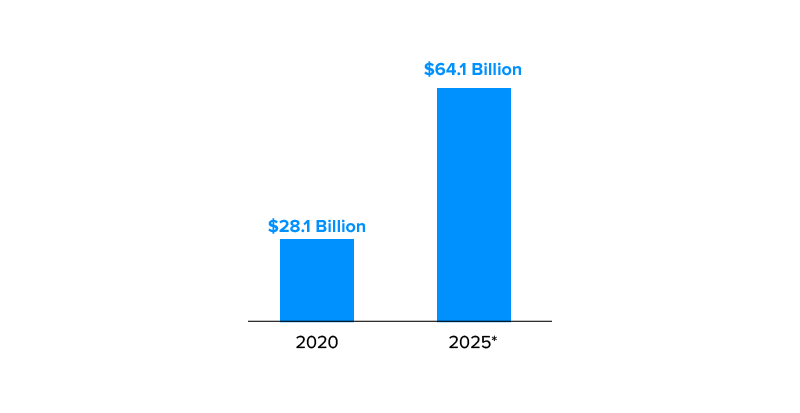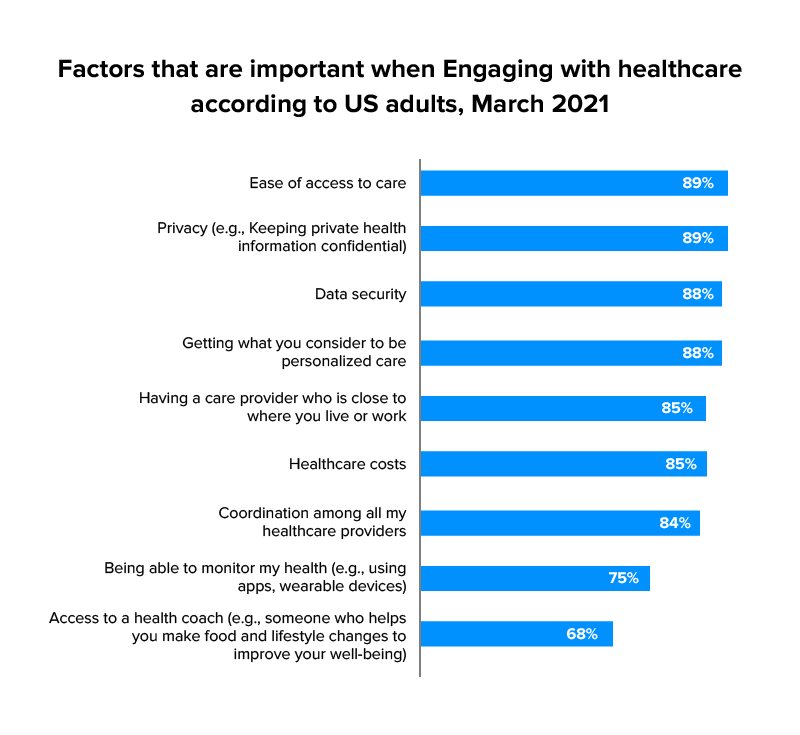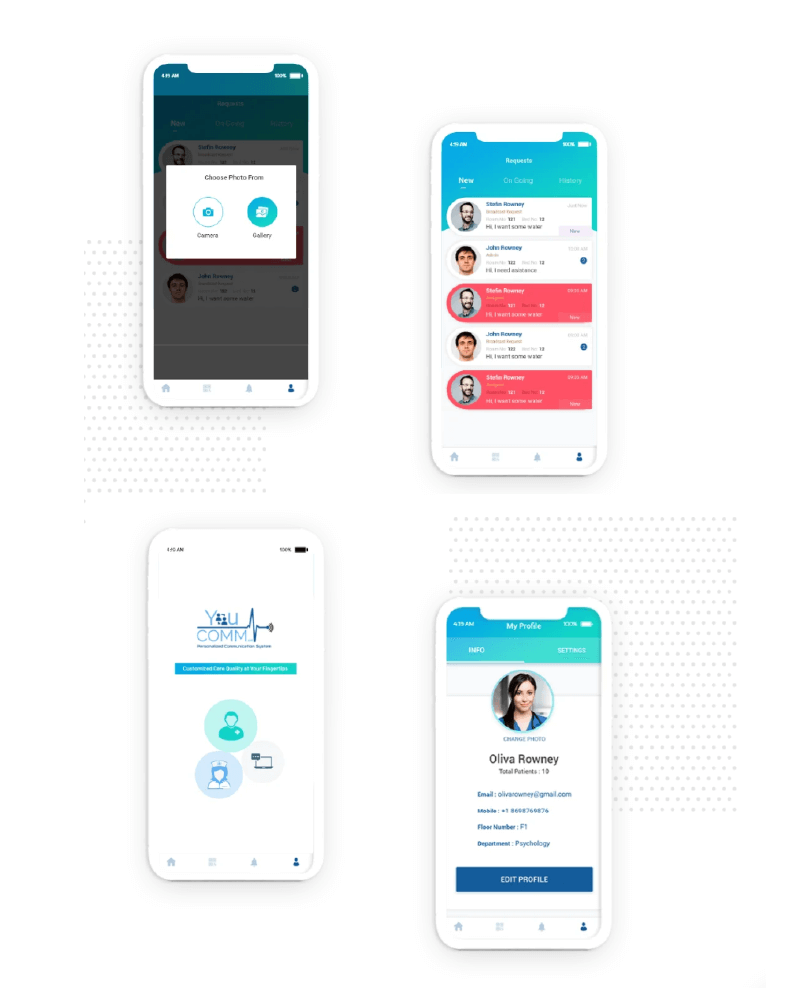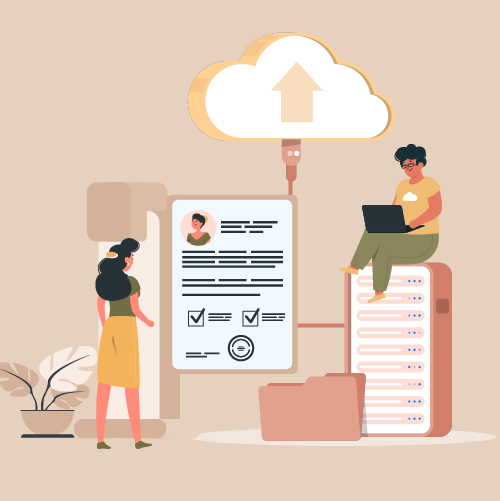The Role of Cloud Computing in Transforming the Healthcare Industry
The healthcare domain is on an innovation drive. The industry is seeing technology making an impact from across all directions – security, predictiveness, accessibility, and affordability.
Now when we talk about technologies changing the healthcare domain for the good, we often talk in terms of blockchain, AI, IoT, etc, but the one that acts as a backbone for all these next-gen technological innovations is cloud computing – one of the all-time technological trends of the healthcare domain.
Cloud computing in healthcare has brought a huge shift in the creation, consumption, storage, and sharing of the medical data. Right from a time where there used to be conventional storage to now through the complete digitalization of healthcare data, the industry has come a long way when it comes to optimizing the data management approaches.

In this article, we are going to look into the different facets of cloud computing in healthcare and how it is revolutionizing the domain.
What is Cloud Computing in Healthcare?
Cloud computing for the healthcare industry describes the approach of implementing remote server access via the internet to store, manage, and process healthcare data. This process, which is stark opposite to the one where on-site data centers are established for hosting data on personal computers, provides a flexible solution for healthcare stakeholders to remotely access servers where the data is hosted.
According to a BCC report, the worldwide healthcare cloud computing market is poised to hit $35 billion by the year 2022, with an annual growth rate of 11.6%.
Shifting to the cloud comes with two-fold benefits for both patients and providers. On the business side, cloud computing has proved to be beneficial for lowering the operational spend while enabling healthcare providers to deliver high-quality and personalized care.
The patients, on the other hand, are getting accustomed with instant delivery of the healthcare services. Moreover, healthcare cloud computing increases patient engagement by giving them access to their healthcare data, which ultimately results in better patient outcomes.
The remote accessibility of healthcare added with the democratization of data free the providers and patients while breaking down the location barriers to healthcare access.
What are the Benefits of Cloud Computing in the Healthcare Industry?
Cloud in Healthcare answers to almost every point that a US adult looks at when engaging with a healthcare service provider –

Lowered healthcare cost
The primary premise of healthcare cloud services is real time availability of computer resources such as data storage and computing power. Both healthcare providers and hospitals get freed from the need to buy data storage hardware and software. Moreover, there are no upfront charges linked with the cloud for healthcare, they will only have to pay for the resource they actually use.
Applications of cloud computing in healthcare provides an optimum environment for scaling without burning a hole in the pocket. With the patient’s data flowing in from not only EMRs but also through healthcare apps and wearables, a cloud environment makes it possible to scale the storage while keeping the costs low.
Easy interoperability
Interoperability focuses on establishing data integrations through the entire healthcare system, irrespective of the origin or where the data is stored. Interoperability powered by healthcare cloud solutions, makes patients’ data available for easy distribution and for getting insights to aid healthcare delivery.
Healthcare cloud computing enables healthcare providers to gain access to patient data gathered from multiple sources, share it with key stakeholders and deliver timely protocols.
Ownership of data by patients
The combination of cloud computing and healthcare democratize data and give the patients control over their health. It grows patient participation in decisions related to their health, working as a tool to better patient engagement and education.
The importance of cloud computing in the industry can also be witnessed by the fact that the medical data can be archived and then retrieved easily when the data is stored on the cloud. With an increase in the system uptime, the data redundancy reduces by a huge extent, while the data recovery also becomes easier.
Improved collaboration
The implementation of cloud for healthcare plays a major role in boosting collaboration. By saving the Electronic Medical Records in the cloud, patients are no more dependent on carrying their medical records to every doctor visit. The doctors can easily view the information, see the outcome of previous interactions, and even share information with one another in real-time. This, in turn, enables them to provide more accurate treatment.
Enhanced patient experience
With the help of cloud for healthcare, doctors get the power to better patient engagement by giving them real-time access to medical data, test results, and even doctors’ notes. This gives the patients control over their health as they become more educated about their health.
Moreover, cloud computing in healthcare provides a check for the patients from being overprescribed or dragged into unnecessary testing – the details of both of which can be found in the medical records.
Now that we have looked into the benefits attached with the incorporation of cloud computing in healthcare, the next step would be to know the different types of cloud computing in healthcare.
Types of Cloud Computing in Healthcare
Cloud computing for the healthcare industry works in two models: Deployment and Distribution.
By deployment
Private – Only one healthcare firm/ chain can use the cloud facility
Community – A group of healthcare bodies can access the cloud
Public – The cloud is open for all the stakeholders to access
Hybrid – The model combines some elements of the above mentioned deployment models
By distribution
Software as a Service (SaaS) – The provider offers IT infrastructure where the client deploys their application.
Infrastructure as a Service (IaaS) – The provider gives an IT infrastructure, operating system where the client deploys their applications.
Platform as a Service (PaaS) – The provider gives an IT infrastructure, an operating system, applications, and every other component in a ready-to-use platform.
YouCOMM – A Working Example of the Benefits of Cloud Computing in Healthcare

Being renowned cloud healthcare providers, at Appinventiv, we understand the ins and outs of the industry and the technological impact of cloud computing.
We recently transitioned this knowledge into an application aimed at bettering in-hospital patient communication. The fully customizable patient messaging system enables patients to notify the staff of their needs through the mode of manual selection of options, voice commands, and the use of head gestures. Through the software, we aimed at breaking down the events of late responses in the in-hospital setup which leads to fatal consequences.
The result? 5+ Hospital chain in the US run on YouCOMM solution today, while 60%
growth has been witnessed in nurses’ real-time response time. Moreover, 3+
hospitals received high CMS reimbursement.
Now while we have been talking about the benefits of cloud healthcare solutions, in order to truly understand the role the technology plays in the industry, it is important to know the risks too.
Risks Associated With Cloud Computing in Healthcare
Limited specialists
In the healthcare software domain, it can be difficult to find skilled developers who carry the specialization to integrate new technologies in the industry. On the same note, it is difficult to find cloud specialists in the health domain.
Limited ecosystem
The adoption of cloud computing in healthcare alone cannot make the industry efficient. For health organizations to truly take advantage of the technology, they will have to connect it with the internet of things, artificial intelligence, and data management technologies.
Difficulty in adoption
Switching from the legacy system to cloud systems requires changing the complete process of handling tasks. It is important that the healthcare organizations bring everyone up to speed with how it would translate into their everyday job.
Security risks
Storing medical data in the cloud is at the center of the technology’s adoption. This, however, puts it at a risk of attack. It happens because in a typical cloud setup, one organization’s data shares the server with other healthcare organizations, and the isolation mechanisms that are put in place to separate them may fail.
This situation is leading to a situation where organizations are on a fence about the technology’s adoption.
At Appinventiv, we build solutions around the common risks associated with 80% of the healthcare cloud projects – compliance check, security, and chances of downtime. The fact that we merge the features and challenges of mHealth app development so seamlessly makes us the true healthcare solution partners for hospitals across the globe.
Also Read: mHealth app development guide 2021-22

strategies your digital product..





